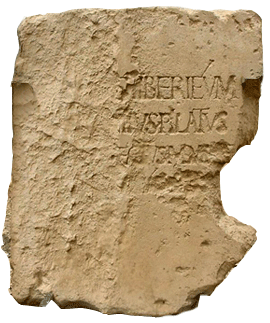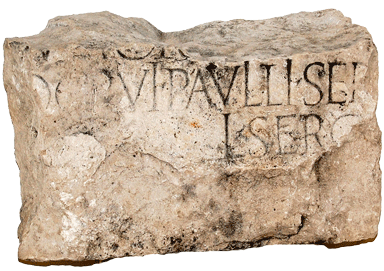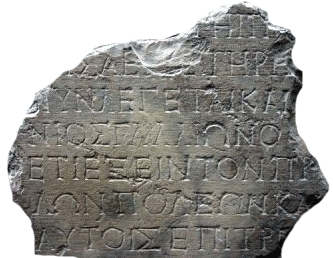History and Early Christianity

A pavement stone from Corinth.
Inscription:
“Erastus
In return for the position of city planner
He laid it at his own expense.”
About the first century AD.
Who was Erastus?
Erastus, who is the city’s director of public works, and our brother Quartus send you their greetings. (Romans 16:23)
Erastus placed a pavement stone at Corinth on a road he paved. Apparently, he laid the road as payment for his appointment as city planner. He is known from the salutations at the end of Romans.

An altar from Pergamum.
Inscription:
“To unknown gods
Capito
torch bearer.”
About the first century AD.
What was the altar to an unknown god?
Paul used an altar to an unknown god in a speech to the leaders in Athens.
For as I walked around and looked carefully at your objects of worship, I even found an altar with this inscription: “To an unknown god.” (Acts 17:23)
An altar found in Pergamum has a similar inscription. It is evidence that such altars existed.

A monument from Caesarea.
Inscription:
“Tiberius
Pontius Pilate
Prefect of Judea.”
About the first century AD.
Who was Pontius Pilate?
Pontius Pilate was the Roman governor of Judea during the execution of Jesus. He hesitantly allowed the Jews to crucify Jesus.
He is mentioned on inscription located at Caesarea.

An inscription from Cyprus.
Lucius Sergius Paulus.
About the first century AD.
Who was Sergius Paulus?
Sergius Paulus was the proconsul of Cyprus. An inscription located at Cyprus mentions him.
There they met a Jewish sorcerer and false prophet named Bar-Jesus, who was an attendant of the proconsul, Sergius Paulus. (Acts 13:6-7)

An inscription from Delphi.
The proconsul Gallio.
About the first century AD.
Who was Gallio?
Gallio is mentioned on an inscription found in Greece. Paul stood before him in judgment while in Corinth.
While Gallio was proconsul of Achaia, the Jews of Corinth made a united attack on Paul and brought him to the place of judgment. (Acts 18:12)
Look at the next Section.